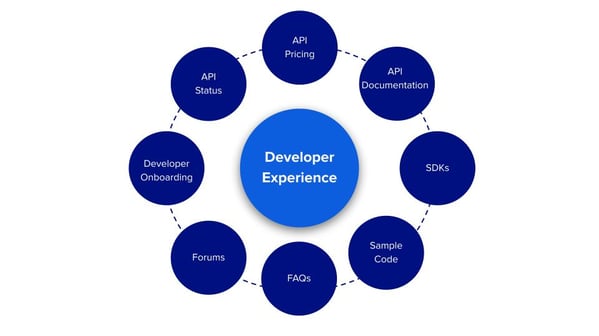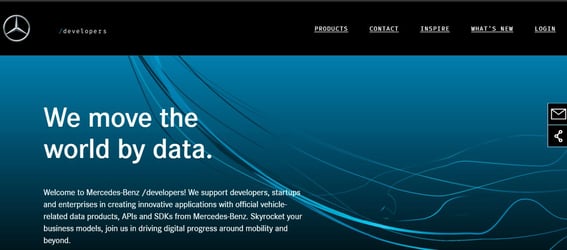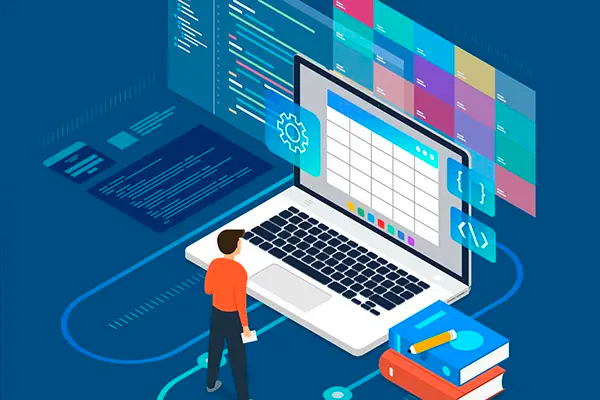The phrase ‘every company is now a software company’ has aged well, thanks to digitization. APIs, one of the key enablers of digitization, are now everywhere, connecting different endpoints that help businesses innovate and flourish. Yet, organizations are often overwhelmed, as they need to manage, monitor, and productize multiple APIs.
This is where an API developer portal can help. It simplifies developer onboarding, drives awareness, eliminates dysfunctional developer collaboration, increases engagement, and boosts API adoption.
In the grand scheme of things, choosing the right developer portal is a very crucial business decision. It is also the channel of communication between API providers and API consumers. Developer experience is the secret sauce that enables this effective communication on developer portals.
So, how can an enterprise drive the business outcomes they need? By amalgamating the right type of portal and adequate features and capabilities that facilitate a good developer experience.
In this blog, we delve into the nuances that make a good developer experience and how to choose a developer portal according to your business needs.
What makes a good developer experience?
Your developer portal, irrespective of the kind of APIs (public or private), should provide a self-service experience. It should ideally answer a defined set of questions for a developer who is willing to experiment with your APIs:

-
Should I use the API?
Answer: Easy and seamless access to holistic API information like availability, API status, pricing, documentation, and use cases provides a clear vision or interpretation of what can be accomplished through the use of an API. This helps to engage developers and boost the possibility of converting them into an innovator or collaborator.
-
What is the sign-up process?
Answer: When a developer is convinced to try your APIs, the next step is to ensure that they have smooth access to them. To facilitate this, easy onboarding must be in place. Quick signing up, raising feature requests, and submitting feedback - all contribute to building a seamless onboarding experience.
-
How do I start using it?
Answer: APIs are integral and complicated, all at the same time. Even a top-notch developer is powerless without adequate information on APIs. Your portal should delegate easy navigation and searchability of API documentation, code samples and snippets, tutorials, FAQs, and SDKs. Moreover, when experimenting with APIs, developers prefer working in environments that provide adequate support. Hence, having a strong support mechanism in the form of a forum, active developer community, and issue tracker, is essential.
Getting Started: Identifying the right developer portal for your business
When faced with the choice of developer portals, enterprises come across two popular choices: Apigee Integrated Portal and DIY Custom Drupal Portal.
To begin with, let us first break down what each of these stand for. Since you are already building APIs, you would be exposing your services to either internal or external developers. But if you plan to go beyond merely building APIs and want to attract developers with the best possible developer experience, Apigee Integrated Portal is a viable choice.
It is an easy-to-use, integrated portal that enables you to properly document and manage access to your APIs, and foster your app developer community. All Apigee users have access to its development tools and can build their own portal quickly. Although easy to start with, an integrated portal has its limitations. For instance, the lack of a CMS can hinder the technical author’s capability to swiftly publish articles.
On the other hand, a Custom Drupal Portal brings in the power and flexibility over and above the features of an Apigee Integrated portal. It is a fully customizable do-it-yourself portal development using the Apigee platform for APIs. Narrowing down the choice of the portal should be based on your business use case.
Apigee Integrated Portal or Custom Drupal Portal? Making the right choice
- Who needs an Apigee Integrated Portal?
Apigee Integrated Portal is an ideal choice for those just getting started with developer portals. This option is primarily for enterprises who need a simple portal with out-of-the-box tools that can help them:
-
- Display API documentation using the default doc rendering.
- Upload API specifications into Apigee Edge for all the APIs.
- Brand the portal with simple color and font choices.
This portal enables enterprises to enjoy the benefits of a fully managed portal on the Google cloud.
- Who needs a Custom Drupal Portal?
The use case for a custom Drupal portal is based on the need for features, which are over and above what the Apigee Integrated portal offers and are rather diverse. These features can provide the the capability to:
-
- API productization and monetization
- Advanced site search
- Product landing page with smooth navigation
- Enterprise quality branding
- Blogs and forums
- Rules-based event management
- Portal logs
- Custom developer registration flows
- Dynamic content update with enhanced content and user control
- Integrate external services and infrastructure in the portal
- API & App monitoring and analytics
- Scale with multiple portals reusing elements of branding, configurations, and more.
Such a portal provides enterprises with the flexibility and scalability to drive solid business outcomes such as building revenue models or engaging and building an ecosystem and so on.
Categories of Custom Drupal Portals
When you have decided to build a custom portal, a few more things need to be identified, such as the type of developers, the tools of promotion, benefits, and so on. So, custom portals can be broadly categorized as:
- Public API Portal
If your company builds APIs that are intended for external consumption - a public API portal is the right choice. On this portal, the developers can find, install and try APIs in a sandbox or via exposed endpoints. Such portals are more dependent on marketing and require building brand trust among developers via hackathons and driving API adoption and innovation via an active developer community.
Such promotional activities also enhance the visibility of APIs and these portals have elaborate marketplaces with a proper API catalog. However, a few functionalities might be restricted and opened only after authentication. Mercedes Benz is one such example of a public developer portal.
 Source: Mercedes Benz Developer Portal
Source: Mercedes Benz Developer Portal
-
Partner Portals
For enterprises working with strategic partners, this portal eases the onboarding process. Unlike public portals, partner portals are not heavily dependent on marketing for discoverability. However, they need to have all the elements of a good developer portal for the program to be successful. The access to developers on such portals is by invitation only. For example, Yes Bank.
-
Internal Developer Portals
As the name suggests, it does not involve external players or partners and is strictly internal. The access is given to internal developers with the authorized company profile. These portals are widely useful to automate recurring tasks and make set-ups easier to maintain by enforcing the same set of standards for multiple APIs. For example, Service NSW.
Success Story: A developer portal-driven business model
Pitney Bowes, a mailing and shipping solutions giant, required enhanced digital competencies to move to growth markets. As the packaging market accelerated, the mail market was declining. So, they pivoted into being a provider of digital shipping and e-commerce solutions by making their core services, such as location intelligence and shipping capabilities, available as APIs.
They witnessed an increase in revenue by about 20% from their new product in 2018 as compared to 5% in 2012. Moreover, revenue from their Shipping APIs, which enable customers to integrate U.S. Postal Service capabilities into their own solutions, went from zero to $100 million within a few years. Visible Supply Chain Management is one such partner utilizing Pitney Bowes’ technology, via their developer portal, to cut transaction times by half and increase production by 2x.
This example substantiates that a developer portal has transitioned from a good-to-have to a must-have enterprise component. It not only solves your internal bottlenecks but also, opens the gateway to a variety of opportunities, such as building a new revenue model, adding another vertical to your business, boosting API adoption, and much more. Our team can take developer portals from proof of concept to the implementation of the final product.
Elevate your digital ecosystem with our cutting-edge services, offering a robust API management platform, an innovative Drupal developer portal, and unparalleled API management services to optimize and streamline your online operations.
Ready to begin? Talk to our experts.
Our Services
Customer Experience Management
- Content Management
- Marketing Automation
- Mobile Application Development
- Drupal Support and Maintanence
Enterprise Modernization, Platforms & Cloud
- Modernization Strategy
- API Management & Developer Portals
- Hybrid Cloud & Cloud Native Platforms
- Site Reliability Engineering




